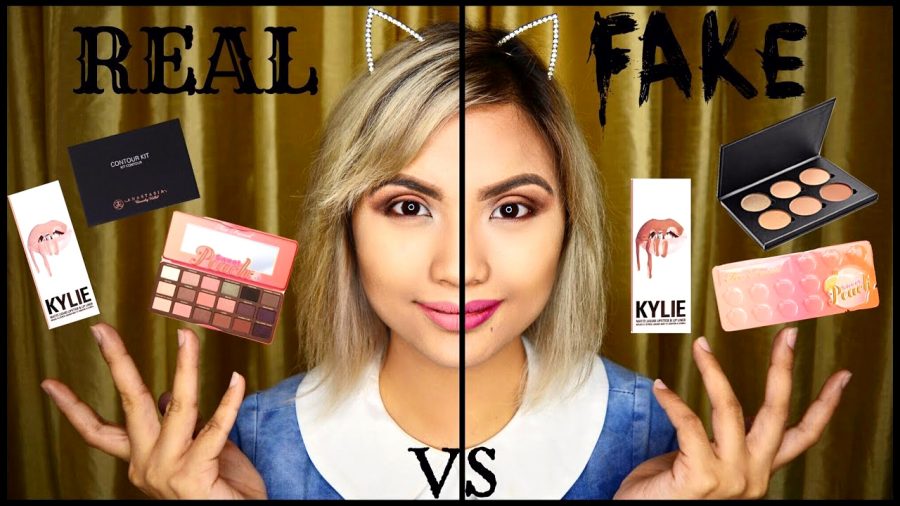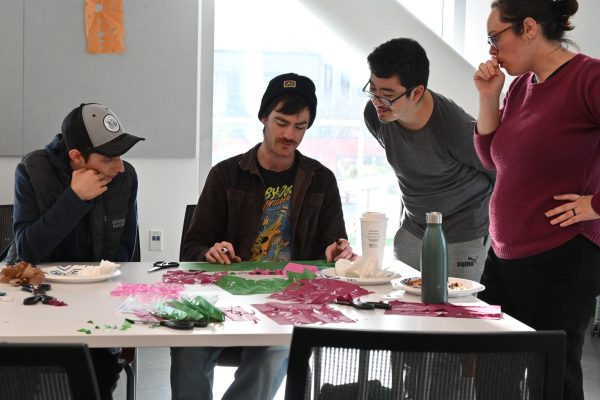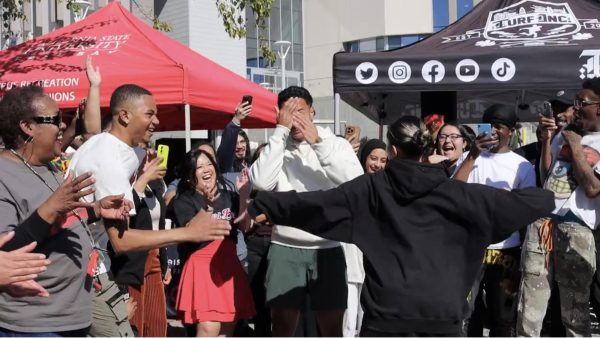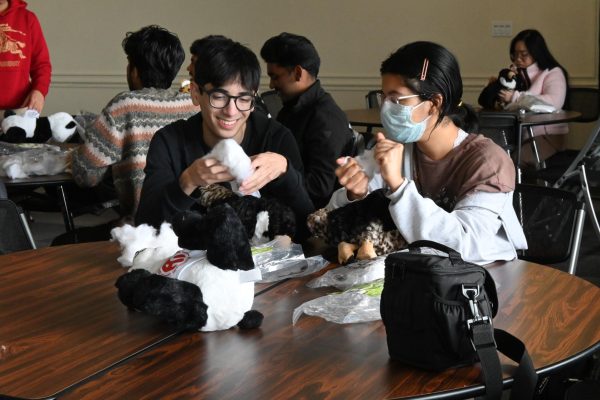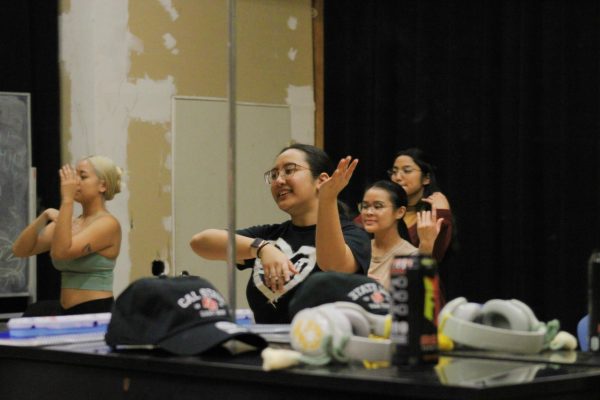The black market for cosmetics
Buying cheap makeup has an ugly side.
Samantha Serrano was recently on the Sephora cosmetic webpage shopping for lipsticks, but she quickly realized she couldn’t afford the $20 Anastasia Beverly Hills liquid lipstick in the color Catnip — soft plum — that she wanted.
She then came across a different web page, that popped up based on her recent searches, that promised to deliver the lipstick she wanted at half the price. Serrano, 21, decided to go for it.
“I thought, what’s the worst that could happen,” Serrano, an Oakland native currently attending California State University Long Beach, told the Pioneer.
Serrano soon found out how bad it can really get. When her Anastasia Beverly Hills liquid lipstick arrived she said, she noticed that the packaging was off. She could see misspelled words, and information was missing from the label. “At that point I guessed they weren’t legit,” she said.
She decided to use the lipstick anyway, which turned out to be a mistake. When she finished putting it on for the first time, it started to feel tacky, then sticky, then it became difficult to separate her lips. “As I forced my lips open, I realized that I had cuts where the skin ripped off,” Serrano said. Serrano later confirmed that the lipstick she purchased was counterfeit and most likely contained glue.
Makeup joins the long list of items that are counterfeited. Just as easy as you would find a fake Michael Kors purse or a fake pair Yeezy’s, rapper Kanye West’s popular sneakers, you can find fake brand-name cosmetics. And the volume of counterfeit cosmetics is increasing. The internet has given counterfeiters widespread access to customers, and because criminals increasingly view dealing in counterfeit personal care products as a relatively low-risk crime because many of the perpetrators are located outside of the U.S.
Counterfeits are available through stand-alone websites, social media networks, and e-commerce platforms. It can also be purchased in big quantities for wholesale. Flea markets sell them and here in the Bay Area vendors easily set up fake cosmetics stands at the Laney, Oakland, and San Jose flea markets, according to the National Intellectual Property Rights (IPR) Center, a government agency based out of Arlington, VA.
When Moesha Escamilla, a 20-year-old student at Laney College, saw her favorite Benefit Mascara for half the price — $10 — at the San Jose Flea Market a couple weeks ago, she couldn’t believe it.
“‘Benefit Better Than Sex’ usually costs me about $26, so when I saw it I thought it was a steal,” Escamilla told the Pioneer. When she got home, Escamilla threw the packaging on the floor without a second glance, ran to the mirror and began to brush each one of her lashes with a heavy coat of her new affordable mascara. But she quickly suffered an allergic reaction to her newly purchased mascara. After inspecting the product, she realized that it was a fake.
“As soon as I started putting it on I could tell it was different, not soon after I started feeling burning and itching a couple minutes after, my eyes got really swollen,” Moesha said. “When I read the labels there were so many typos and Benefit was spelled Benefict.”
The cosmetics industry has seen a recent boom in profit and popularity, because of social media and specialty beauty retailers such as Ulta and Sephora. In 2015 Ulta opened 77 stores to end the year with 874 units, as reported by Forbes. Beauty consumers turn to popular social media platforms such as, Instagram or Pinterest for makeup inspiration and then buy the makeup they see in these videos at places like Ulta.
These beauty retailers have garnered a lot of attention with beauty shoppers by offering a variety of brands under one roof, creating a unique experience in the beauty marketplace. In the past beauty consumers had to purchase their makeup from drugstores or upscale department stores that only carried one brand. Sephora and Ulta has facilitated beauty consumers access to thousands of quality, pricey makeup brands such as Anastasia Beverly Hills, MAC, Too Faced, and Urban Decay. This in turn has created a high demand for these products at a more attainable price.
An Anastasia Beverly Hills lipstick that contains .11 ounces of product costs $20 plus tax. This may not seem like a lot for some, but for others $20 can break the budget. An affordable option that promises to deliver everything the other brands promise but cheaper is appealing.
But with those cheaper costs come potential dangers. The Federal Bureau of Investigations stated in a 2014 report, that unlike counterfeit hand bags and shoes, cosmetics go on the skin and anything that goes on your skin gets absorbed into the body. Most of these products are manufactured in China in unsanitary conditions and that same FBI report shows that agents have found aluminum, human carcinogens, dangerous levels of bacteria, and even horse urine in the products they’ve seized.
In fact, from 2008 to 2010 70 percent of seized counterfeit goods worldwide came from China, most of these products contained mercury, lead, arsenic, cyanide and even human urine and rat droppings. The level of toxins in some of these products have led to severe allergic reactions including skin rashes and burns, disfigurement and long-term health problems such as high blood pressure and infertility, as reported by the website Mashable.com and FBI reports.


